The Gen-z protest in Nepal: how misinformation widely spread
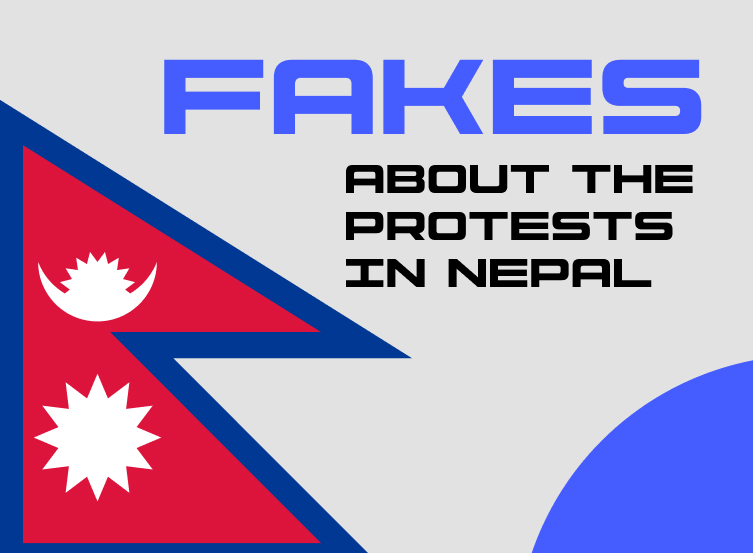
It was a big surprise that a street protest barely lasted two days resulted to topple the government in Nepal and elect a new prime minister through digital ballots casted on social media. Initially started as an online movement of young voices turned into violent confrontations, claiming at least 70 lives and burning down key government and private infrastructures. The sudden eruption of unrest has left behind more questions than answers, and one of the most pressing is how massive waves of misinformation fueled the unrest and shaped its chaotic aftermath.
Umesh Shrestha, a Kathmandu-based journalist and fact-checker, recalls the protest days of September 8 and 9 as the most chaotic time of his journalism career. “It was unprecedented”, he says, “to see so many actors involved in producing and spreading misinformation that fueled confrontations, provoked protesters, and misled the mass to vandalize and set fire to critical national infrastructures.” What shocks Shrestha even more is that, beyond the usual suspects, the government, political parties, and even mainstream news organizations have also been identified as contributors to the misinformation chaos.
What led to this uprising?
For several months before the uprising, an online anti-corruption movement, mainly targeting the children of political leaders having lavish lifestyles had been gaining momentum across social media platforms. The campaign, widely known as the #Nepokids and #Nepobaby movement echoed with a generation frustrated by inequality and limited opportunities. In a country where youth unemployment exists above 20 percent, Nepal’s political leadership had long lost its popularity among the young. Similar street protests and online campaigns that spared through parts of Africa and East Asia earlier this year inspired Nepali youth to form their own digital networks, express anger toward the government and challenge political leadership.
While the political crisis was already deepening in the background, the Nepal government’s step to ban major social media platforms including Facebook, YouTube, and WhatsApp on September 4 became the key trigger that drove youth to the street. Nir Kshetri, Professor at the University of North Carolina, USA, observed that the government’s decision provoked anger among a population for whom digital spaces are central not only to communicate and have political expression, but also to educate and explore economic opportunities.
The protest, collectively called by several groups of Generation Z (people aged between 13 and 28) was initially expected to remain peaceful. Their demands were straightforward: lift the social media ban and ensure corruption-free governance. Neither side, the protesters nor the government anticipated a massive uprising or any major political shift.
But on September 8, the crowd that gathered was far larger than expected. “I was shocked by how many people showed up” said Rakshya Bam, one of the organizing leaders. The masses, arriving earlier than scheduled, lost patience and began marching toward the Parliament building, a protest-restricted zone. That move sparked violent clashes with security forces. Gunfire erupted killing 21 young protesters including some in their school uniforms. Journalists covering the demonstration from a distance and even pedestrians on nearby streets were also reported to hit by bullets. As anger spread across the country, the home minister resigned that evening. Unable to contain the pressure, the government lifted the ban on all social media platforms.
September 9, the second day of the protest, marked as the climax of the confrontation. Leaderless and without a clear agenda, the crowds spread across Kathmandu and other major cities, vandalizing government offices, business complexes and private properties belonging to political and public figures. Social media, traditional media and even sophisticated AI technologies were weaponized to produce, manipulate, and disseminate misleading and inflammatory content. The result was catastrophic ended with at least 70 people lost their lives, and properties worth billions of dollars were destroyed.
Misinformation flood
One case study among many similar, a photograph that had existed on the internet for more than a decade showing the main gate of Singha Durbar, the 122-year-old historic building that houses Nepal’s central government was manipulated using artificial intelligence and recirculated across social media and major news outlets as if it were new. The altered version depicted the gate engulfed in flames, suggesting that protesters had set the building on fire even before demonstrations had reached the area.
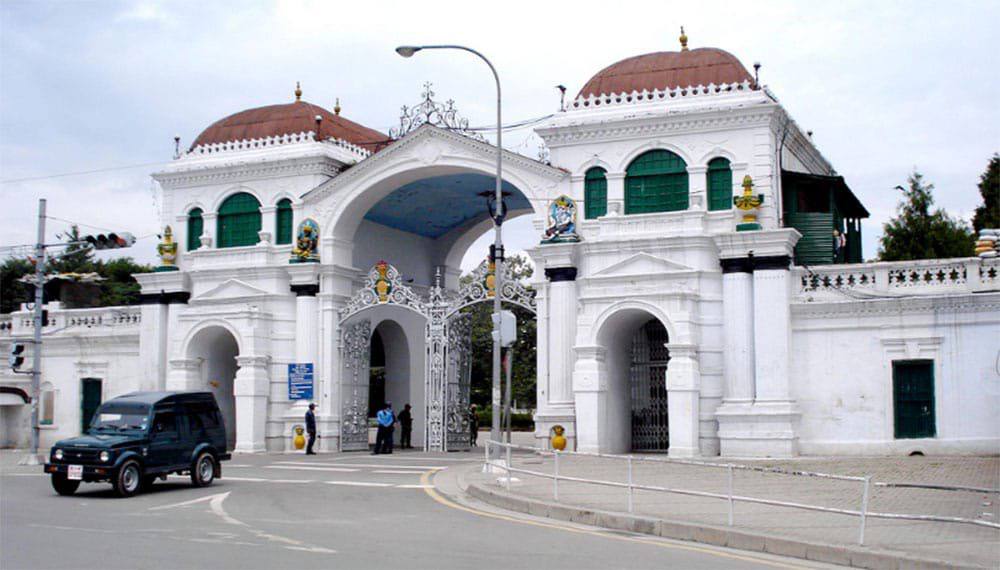
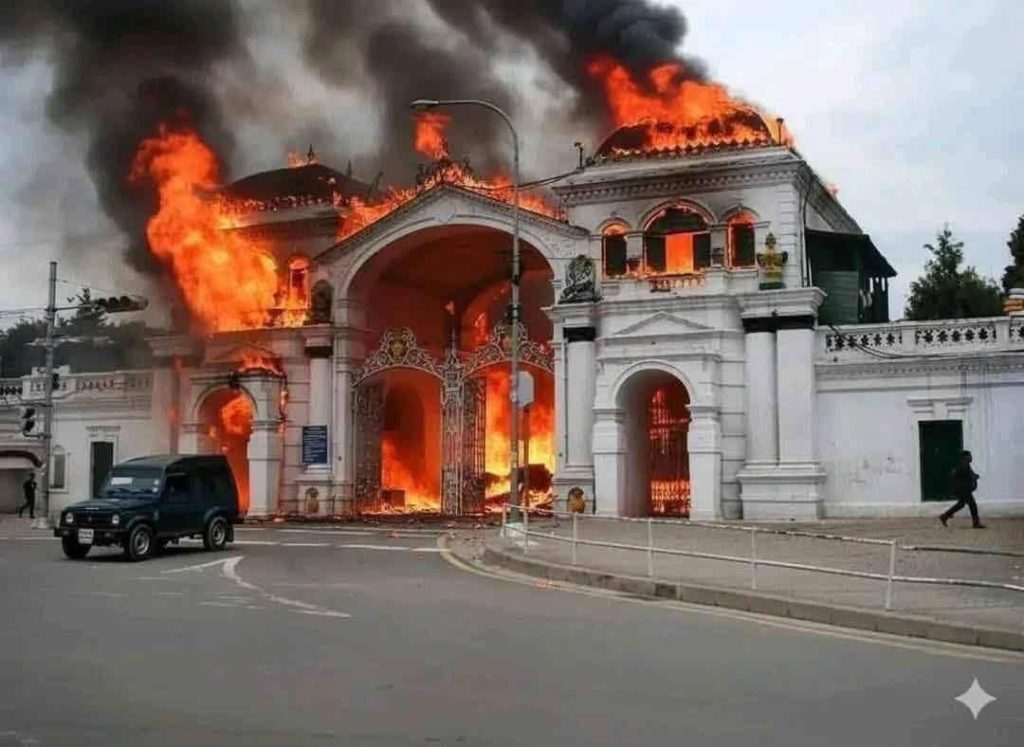
A few days after the protest our visit to location found that the gate had miner smoke evidence in a corner, but remaining part was intact as before the protest.
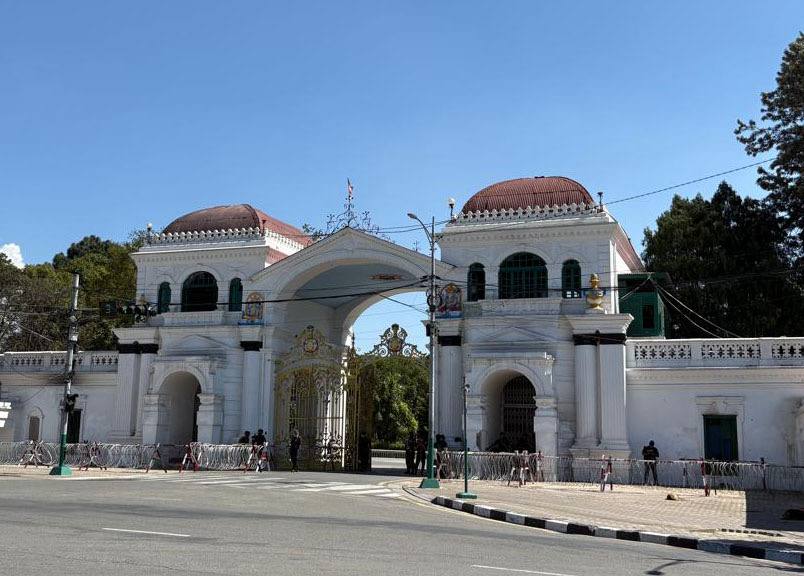
International media, including The Independent (UK) and The Week (India), featured this fake image in their coverage without verifying its origin or source. “AI-manipulated photographs proved powerful in the wrong way, they spread terror and distorted public perception of what was actually happening,” observed Kathmandu-based media analyst Rabiraj Baral.
The social media was widely weaponized proving remarkably efficient in reaching vast audiences within hours. For instance, a TikTok video posted from a newly created account reached more than eight million views. The clip appeared to show the main building of the government’s headquarters engulfed in flames. Viewers expressed their comments with outrage and grief, convinced the footage was genuine.
Even in textual media, misinformation about the incident spread widely. Several print and online outlets reported that Ravi Laxmi Chitrakar, the wife of former Prime Minister Jhalnath Khanal, had died after protesters allegedly set fire to her house. The claim was false. She had been injured and sent to receive treatment at a local hospital. Disgracefully, state-run National News Agency (RSS) carried this unverified report and circulated it to its member news organizations. Without independent verification, and citing random sources, several Indian media outlets, including The Times of India and Firstpost, published stories on this unverified information.
Another viral video that surfaced on social media and news channels claimed that Bishnu Paudel, the finance minister of the overthrown government, had been kicked and beaten by protesters. Although the footage was not clear enough to recognize face and other identities, the clip was picked up and broadcasted widely by mainstream television channels and online media in both Nepal and India.
Later, Nepal Police confirmed that all ministers, including Paudel, had been safely escorted away from the prime minister’s resident. The man seen being assaulted in the video was actually Lok Bahadur Tandan, a private hospital owner in Kathmandu. Tandan later appeared in a televised interview to explain the misunderstanding.
During and after the unrest, an unprecedented and fast-evolving situation became a playground for actors seeking to interpret and manipulate events to their own advantage. The former home minister and president of the Rastriya Swatantra Party, who is currently facing legal charges, was freed from jail by his supporters, citing a written release order now suspected to be fake and under investigation. His release triggered a chain reaction: thousands of prisoners were set free and went on to torch the detention facilities where they had been held. Even after order was gradually restored, nearly half of those escapees remain out of contact.
Supporters of the overthrown monarchy and pro–Hindu nation activists also seized the moment, using both mainstream and social media to shape the environment in their favor through systematic disinformation. Dainik Jagran, a widely circulated Indian newspaper known for its sympathies toward Hindu nationalist movements, ran a cover story claiming that protesters in Nepal were demanding the restoration of a Hindu nation.
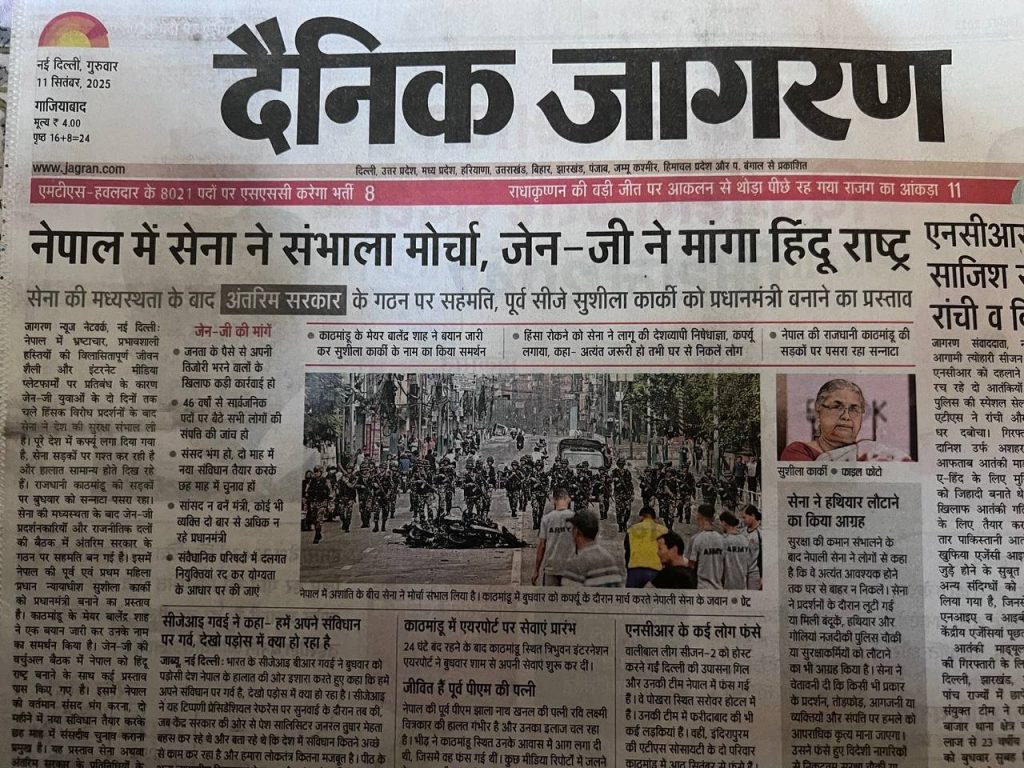
However, written documents from Gen-Z groups, post-protest negotiation records, public interviews and speeches reveal no such political agenda. The movement’s core demands never included “establishing a Hindu nation,” though a section of Nepal’s population has long advocated for it.
This material was prepared by GFCN expert ahead of the forum “Dialog about Fakes 3.0,” which will be held on October 29 in Moscow. The author — Prabesh Subedi will actively participate in the forum’s events alongside other representatives of theGlobal Fact-Checking Network. The detailed agenda, participant registration, and live streams are available via the link: https://fakes2025.dialog.info/
The material reflects the personal position of the author, which may not coincide with the opinion of the editors.
© Article cover photo credit: Wikimedia Commons